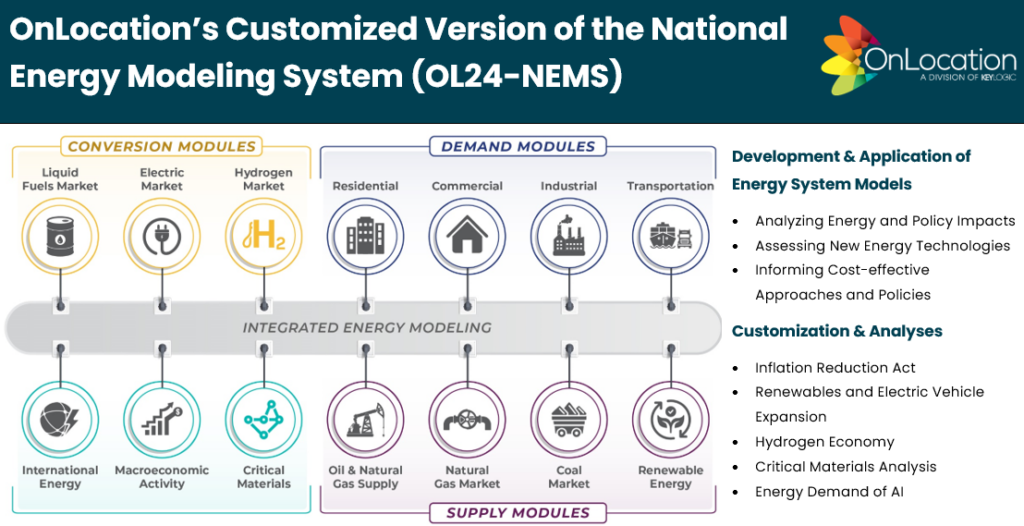Trump’s Energy Executive Orders: Potential Impact for Production, Resource Mix
As his administration took office on January 20, 2025, President Trump issued several executive orders (EOs) that have the potential to affect energy production and associated infrastructure as well as the future energy mix in the United States. The articulated aim of the energy and climate focused EOs is to boost development and production of “domestic energy resources — with particular attention to oil, natural gas, coal, hydropower, biofuels, critical mineral, and nuclear energy resources…” (see Unleashing American Energy below). Energy-focused EOs issued during the week of January 20, 2025, include the following:
- Declaring a National Energy Emergency: aims to speed up infrastructure development and defines “energy” and “energy resources” as “crude oil, natural gas, lease condensates, natural gas liquids, refined petroleum products, uranium, coal, biofuels, geothermal heat, the kinetic movement of flowing water, and critical minerals, as defined by 30 U.S.C. 1606 (a)(3).” Within this directive, there is also the proposal to issue emergency fuel waivers to allow the year-round sale of E15 gasoline.
- Unleashing American Energy: calls for a 30-day review period among relevant agencies to determine “All Agency Actions that Potentially Burden the Development of Domestic Energy Resources.”
- Temporary Withdrawal of All Areas on the Outer Continental Shelf from Offshore Wind Leasing and Review of the Federal Government’s Leasing and Permitting Practices for Wind Projects: focus of this EO is around wind energy and calls to “withdraw from disposition for wind energy leasing all areas within the Offshore Continental Shelf (OCS) as defined in section 2 of the Outer Continental Shelf Lands Act, 43 U.S.C. 1331.” Concerning both onshore and offshore wind, the order also calls for all relevant agencies to halt “new or renewed approvals, rights of way, permits, leases, or loans.”
- Unleashing Alaska’s Extraordinary Resource Potential: aims to prioritize the development of Alaska’s LNG sector, including associated infrastructure through expedited permitting of pipelines, and also calls for the withdrawal of Secretarial Order 3401, implemented by the Biden administration’s Department of the Interior, effectively suspending all activities related to the implementation of the Coastal Plain Oil and Gas Leasing Program in the Arctic National Wildlife Refuge (ANWR).
Modeling EO Impacts on the U.S. Energy Sector
For decades, OnLocation has assisted the U.S. Energy Information Administration (EIA) and other Department of Energy (DOE) offices with developing, maintaining, and enhancing the National Energy Modeling System (NEMS), the premier tool for analyzing the future of the U.S. energy economy.

Our in-house customized version of the model (OL-NEMS) provides an excellent starting point for exploring the impact of Trump Administration policies, including the EOs referenced above, and evaluating the policy and technological options for implementation. One of the core strengths of NEMS is that it is “integrated,” i.e., an energy model that analyzes how multiple sectors interact and how actions in one sector might have a direct impact on another. Some key aspects of the model:
- Oil and gas supply. The NEMS model includes a rich level of detail about the plays and reservoirs, including Alaskan resources, that can be explored and/or developed, with timelines, production and the associated costs for each. Utilizing the OL-NEMS model, OnLocation can adjust assumptions around future oil and gas production as proposed in the Trump administration EOs and reveal the attendant supply and demand impacts on the energy system.
- Petroleum products and their substitutes. The detailed liquid fuels module in NEMS includes a range of refinery processes and products that can be used to address issues such as changes in crude types and demands as well as analyzing policies and markets influencing the deployment of biofuels. This includes analyzing the impact of the proposal to institute a fuel mandate to provide E15 gasoline year-round, instead of just during the summer driving season,
- Power sector policies and technologies. The model includes a high level of technology and economic detail, capable of simulating the full range from small modular reactors to advanced combined cycles, coal with carbon capture, and renewables such as wind. The new administration has advocated for ensuring ample U.S. energy supply and lowering costs to consumers and plans to evaluate options from economic and energy security perspectives. In his confirmation hearing on January 15, 2025, U.S. Dept. of Energy Secretary nominee Chris Wright answered a question about growing electricity demand from data centers and AI:
“This is an important issue that I intend to be briefed about in order to determine how to meet the growing needs and demands on the grid due to growth in data centers, AI and other elements.”
By working with OnLocation, clients can change underlying assumptions tailored to their specific policy or business concerns. Our consultants are uniquely qualified to help formulate and analyze a wide range of energy and environmental scenarios and have particular expertise in evaluating the evolving energy landscape as it relates to the growing demand of data centers and artificial intelligence (AI). The new administration has indicated that meeting this growing demand is a top priority. OnLocation can help clients understand the implications of changing U.S. energy and environmental policies by using objective quantitative methods which can better inform business and investment decisions.

